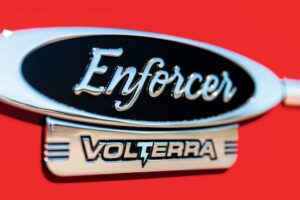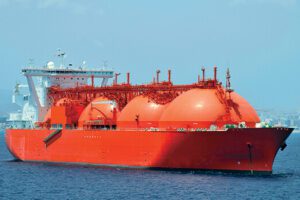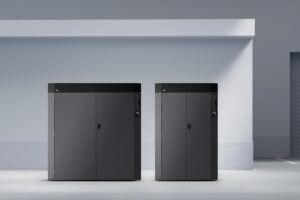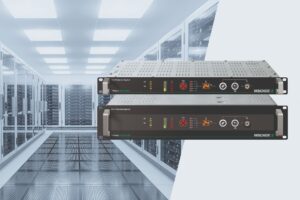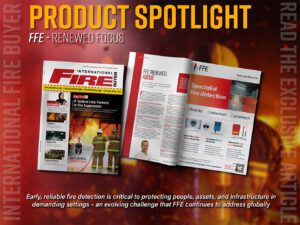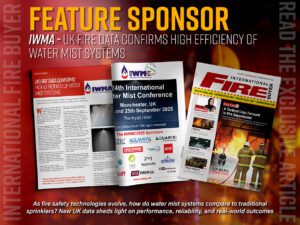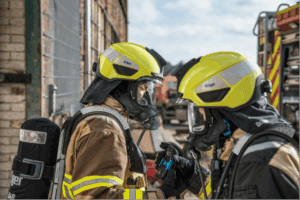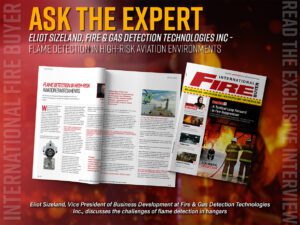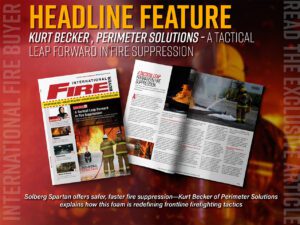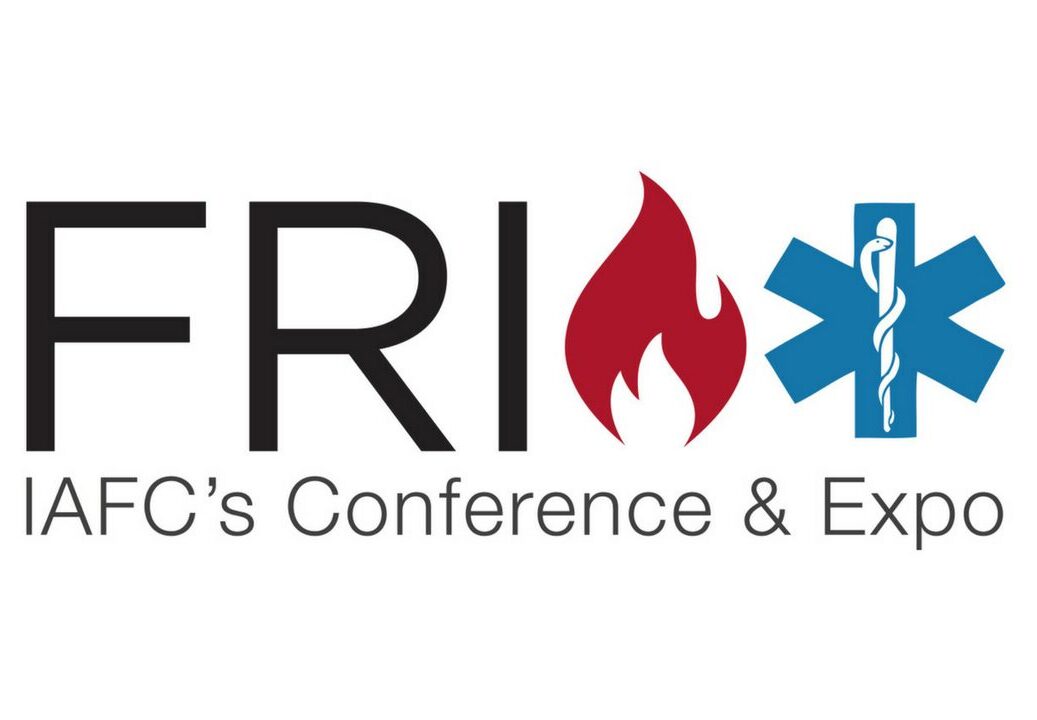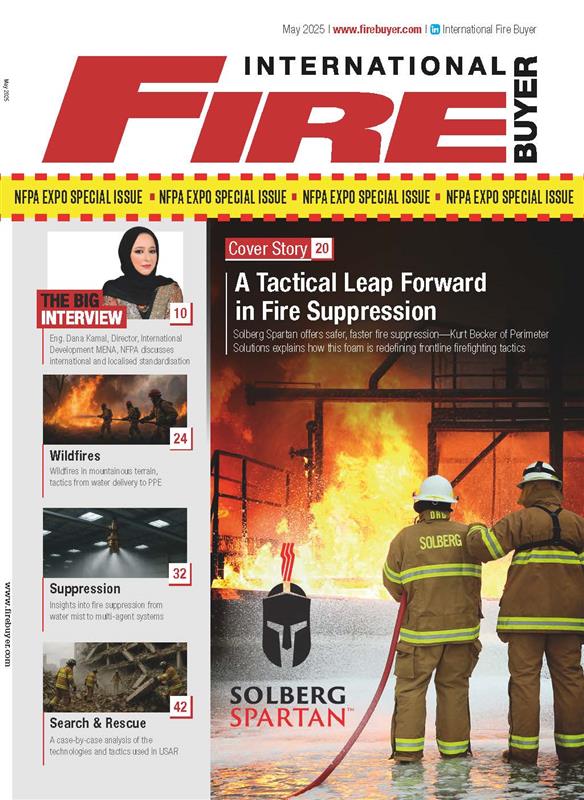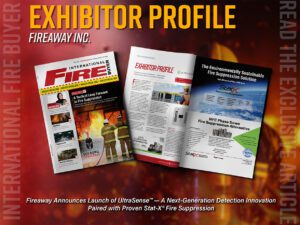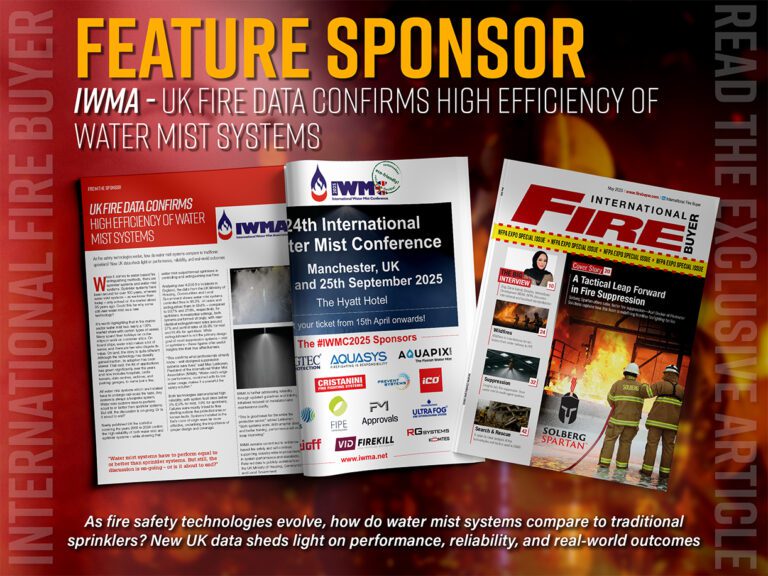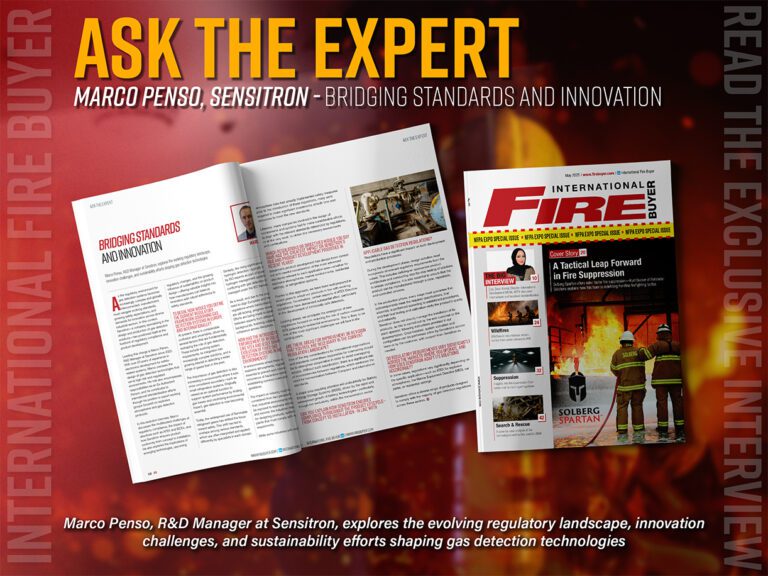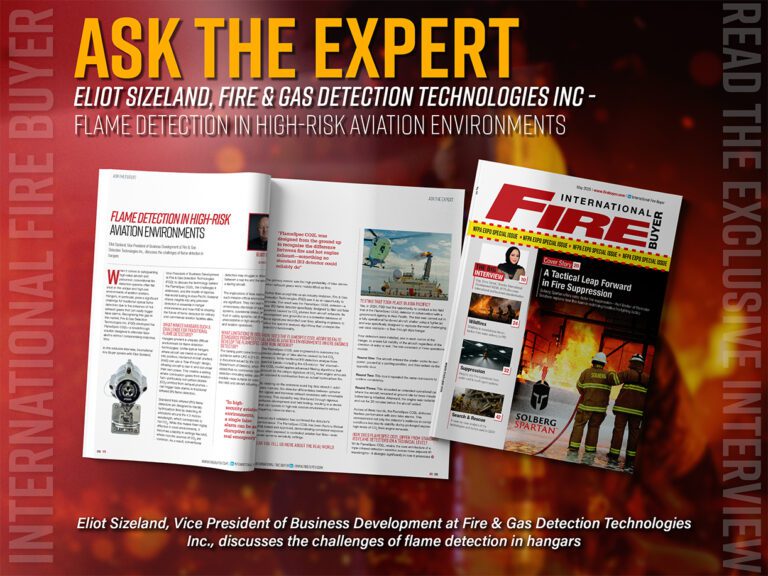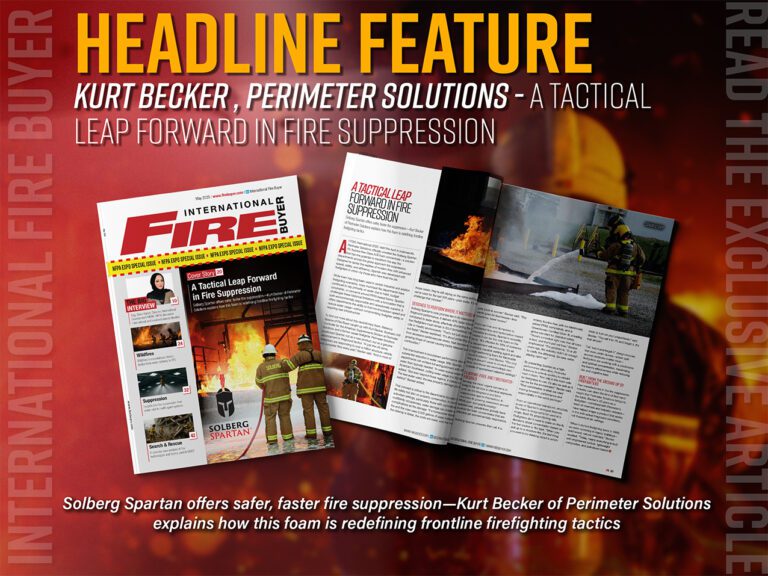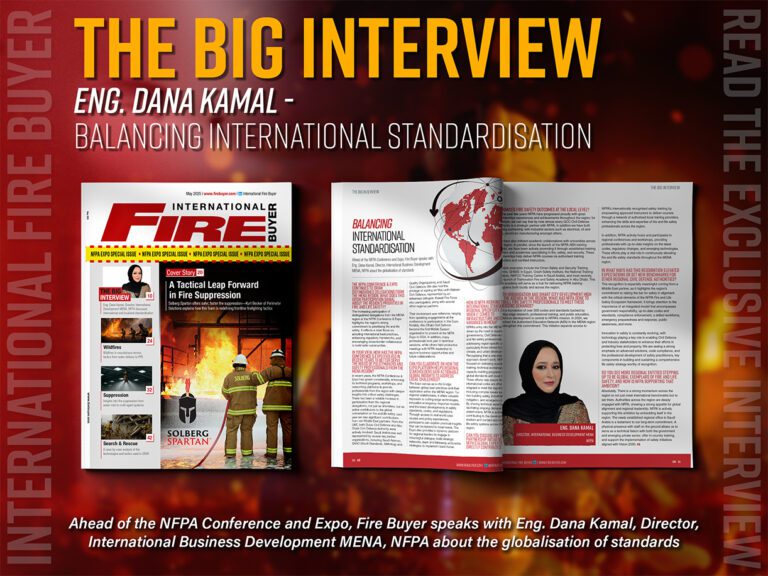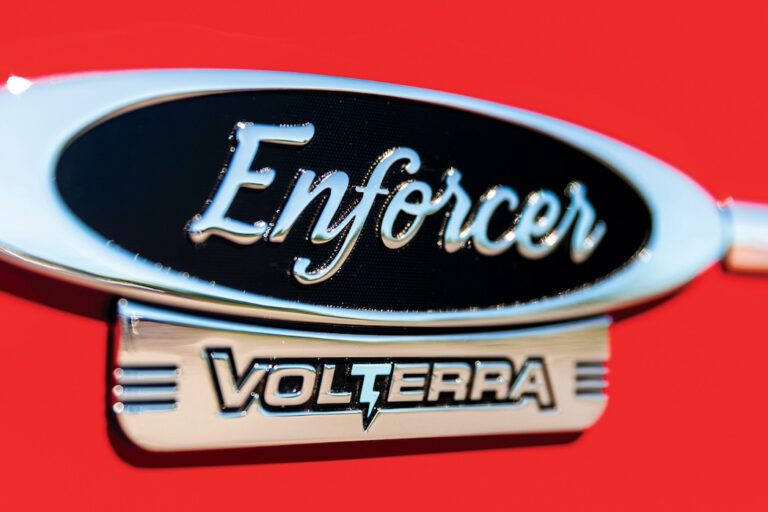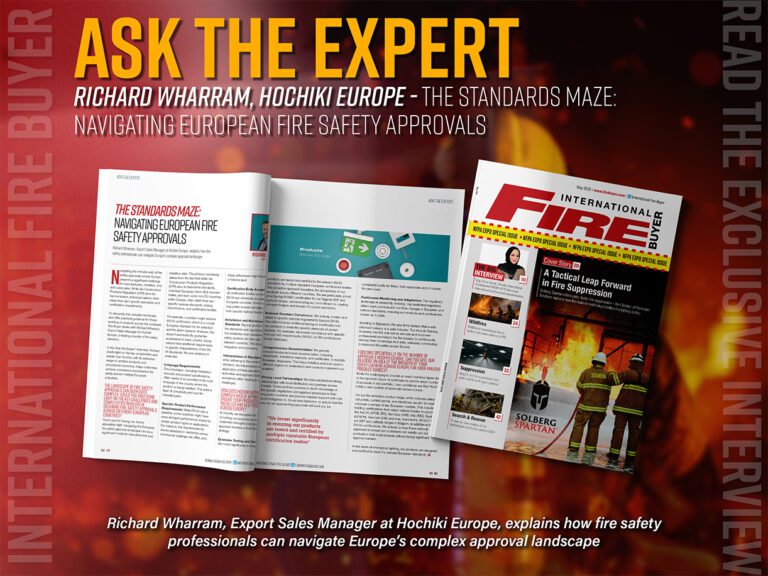Expert in fluorine-free firefighting foams, John Olav Ottesen, CEO of Fomtec provides an expert insight into the sustainable and necessary future of firefighting foams
As a pioneer in the development of fluorine-free firefighting foams, how have you seen perceptions and attitudes towards these foams evolve over time?
Having been involved with fluorinated foams all my career I was initially very apprehensive about the possibilities of being able to formulate fluorine free foams with similar performance to an AFFF, or an AR-AFFF. Now more than 10 years on we have developed and approved to various international standards a range of SFFF’s under our “Enviro” brandname.
Fluorine free foams definitely DO work, but, just as fluorinated foams, they MUST be deployed as per international design standards such as NFPA, or FM data pages, at the recommended application densities and durations and used with hardware that is specifically tested and approved with the foam concentrate.
Fomtec has been at the forefront of innovation in fire suppression technology. Could you elaborate on the key advantages and unique features of your fluorine-free foams compared to traditional AFFFs?
If we talk about AFFF, we manufacture, and sell a range of different C6 AFFF formulations which are formulated and approved to different international standards for the markets that they are deployed in. We offer AFFF’s to meet the requirements of municipal fire departments through to the demanding specification of US Mil Spec, through to the rapid control and extinguishing requirements of the Aviation Fire & Rescue Fire teams (through ICAO), and the requirements for use through standard (non-aspirating) sprinklers.
Launched into the market more than 5 years ago Enviro USP is designed to be an AFFF alternative and has been tested and approved to multiple standards including:
- EN 1568-3 IA rating on fresh water
- UL 162 Topside and Sprinkler (Test on heptane)
- FM 5130 Topside and Sprinkler (Approved on heptane and Jet A-1 up to 14.5m
- ICAO Level B
- IMO 1312 @ 6%
Enviro USP is also approved by GESIP and in a quality control test to LASTFIRE test protocol with freshwater on heptane achieved GOOD, GOOD, GOOD performance.
Although ultimately disqualified by the US DOD requirement to have a low viscosity foam concentrate in extensive testing carried out as part of the development programme for their new MIL SPEC for Fluorine Free Foams Enviro USP met all the fire performance standards that are now incorporated in the standard.
With regard to Alcohol Resistant SFFF’s our current star is the Enviro ARK, which I am proud to say was the first SFFF to be approved by FM for use on polar solvent fuels with standard sprinklers.
Through our testing and approval work with both UL and FM the Enviro USP and Enviro ARK were the first SFFF’s that could be deployed in accordance with NFPA standards across all the different fixed foam system requirements regardless of the discharge device or fuel.
Fire performance test standards play a crucial role in assessing firefighting foams. Can you explain how Fomtec’s fluorine-free foams align with and, in some cases, challenge existing standards in the industry?
It’s no secret that Fomtec’s preferred test standards are UL and FM, as we believe that they “system” approach is closer to the real world usage of foam rather than relying on a single point of data from a test nozzle that is designed to give good expansion and drain times. Through our more than 2,500 full scale fire tests in our Enviro Programme we have lots of data to support our position that foam qualities achieved with fluorine free foams are more important to the fire performance than we saw with fluorinated foams.
Even within UL and FM we see changes to the test standards due to data being obtained through the testing of SFFF’s. For example FM within FM 5130 have added a clause relating to the approval on hydrocarbon fuels in that the approval test on heptane now states “heptane” in the approval rather than “hydrocarbons”.
What role do research and development play in continuously improving the performance and effectiveness of fluorine-free foams/additives? Are there any recent breakthroughs or advancements worth mentioning?
I want to venture an opinion that SFFF’s are probably the most tested type of foam agent that have ever been commercialised! I accept the concerns, because I had them too, that taking away the fluorochemicals meant a fundamental change in the chemistry of firefighting foams. It is human nature that we don’t really like change and this is magnified when we are talking about a safety product. We have to know that it works and then there is the obvious comparison between the new and the old.
There is no question that the fire performance of SFFF’s is more dependent on the fuels, application methods (direct, indirect as well as heights etc), and foam qualities (expansion ratio, drain times and bubble structure) than fluorinated foams. Determining the impact of these variables on the performance and the limits is why we carry out so many full scale fire tests. Until we have the data then we only have opinions!
Development of fluorine free foams is still in it’s infancy and we should remember that fluorinated foams have been with us since the 1960’s so have 50+ years of development and improvement. Fomtec remain committed to the development of better performing SFFF’s and we continue to add new or improved performance approvals to our existing products whilst looking at new formulations that will be the next generation of SFFF.
In recent months we have added to the approvals with UL and FM with Enviro USP and Enviro ARK. We have developed and launched Enviro AIR – an ICAO B low viscosity SFFF and we have a number of interesting product launches planned for 2024.
To read more articles, see our last issue here.
Never miss a story… Follow us on:
International Fire Buyer
@Firebuyer
Fire Buyer
Media Contact
Rebecca Spayne Managing Editor, International Fire Buyer
Tel: +44 (0) 1622 823 920
Email: [email protected]


